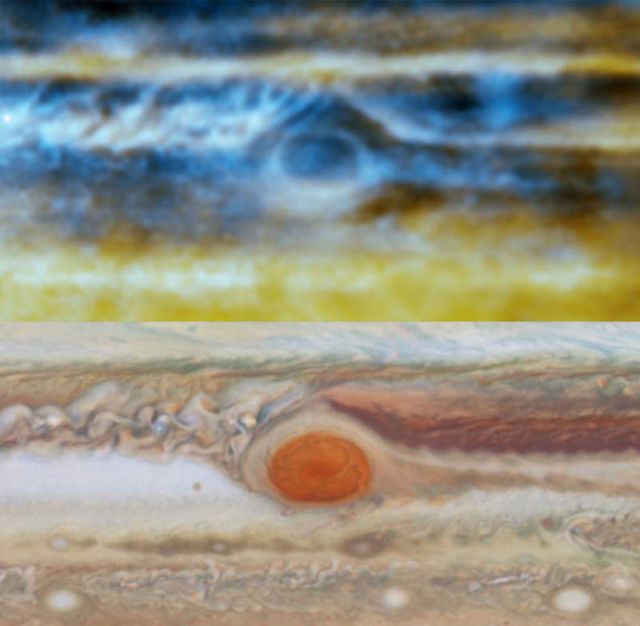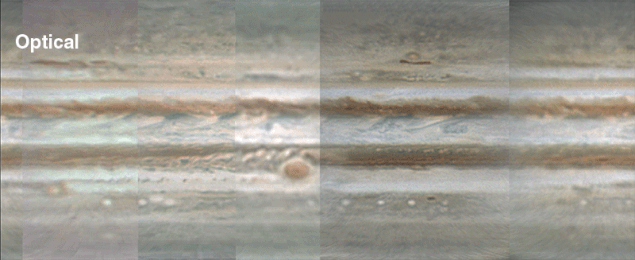A new radio map of Jupiter, reveals what’s beneath the clouds on the giant planet.
The most detailed radio map of the atmosphere of Jupiter, revealed the massive movement of ammonia gas that underlies the colorful bands and spots visible to the naked eye, by astronomers using the upgraded Karl G. Jansky Very Large Array in New Mexico.
Above, the VLA radio map of the region around the Great Red Spot in Jupiter’s atmosphere shows complex upwellings and downwellings of ammonia gas (upper map), that shape the colorful cloud layers seen in the approximately true-color Hubble map (lower map). Credit: Radio: Michael H. Wong, Imke de Pater (UC Berkeley), Robert J. Sault (Univ. Melbourne). Optical: NASA, ESA, A.A. Simon (GSFC), M.H. Wong (UC Berkeley), and G.S. Orton (JPL-Caltech)
This video is an alternation of two overlaid maps of Jupiter, one optical the other radio, showing what the atmosphere looks like under the surface clouds.
Researchers from the University of California, Berkeley, measured radio emissions from Jupiter’s atmosphere and were able to see as deep as 100 kilometers below the cloud tops, where clouds form.
In this animated gif, optical images of the surface clouds encircling Jupiter’s equator –including the famous Great Red Spot — alternate with new detailed radio images of the deep atmosphere (up to 30 kilometers below the clouds). The radio map shows ammonia-rich gases rising to the surface (dark) intermixed with descending, ammonia-poor gases (bright). Credit: Radio: Robert J. Sault (Univ. Melbourne), Imke de Pater and Michael H. Wong (UC Berkeley). Optical: Marco Vedovato, Christopher Go, Manos Kardasis, Ian Sharp, Imke de Pater.
Read the full report at berkeley.edu







Leave A Comment